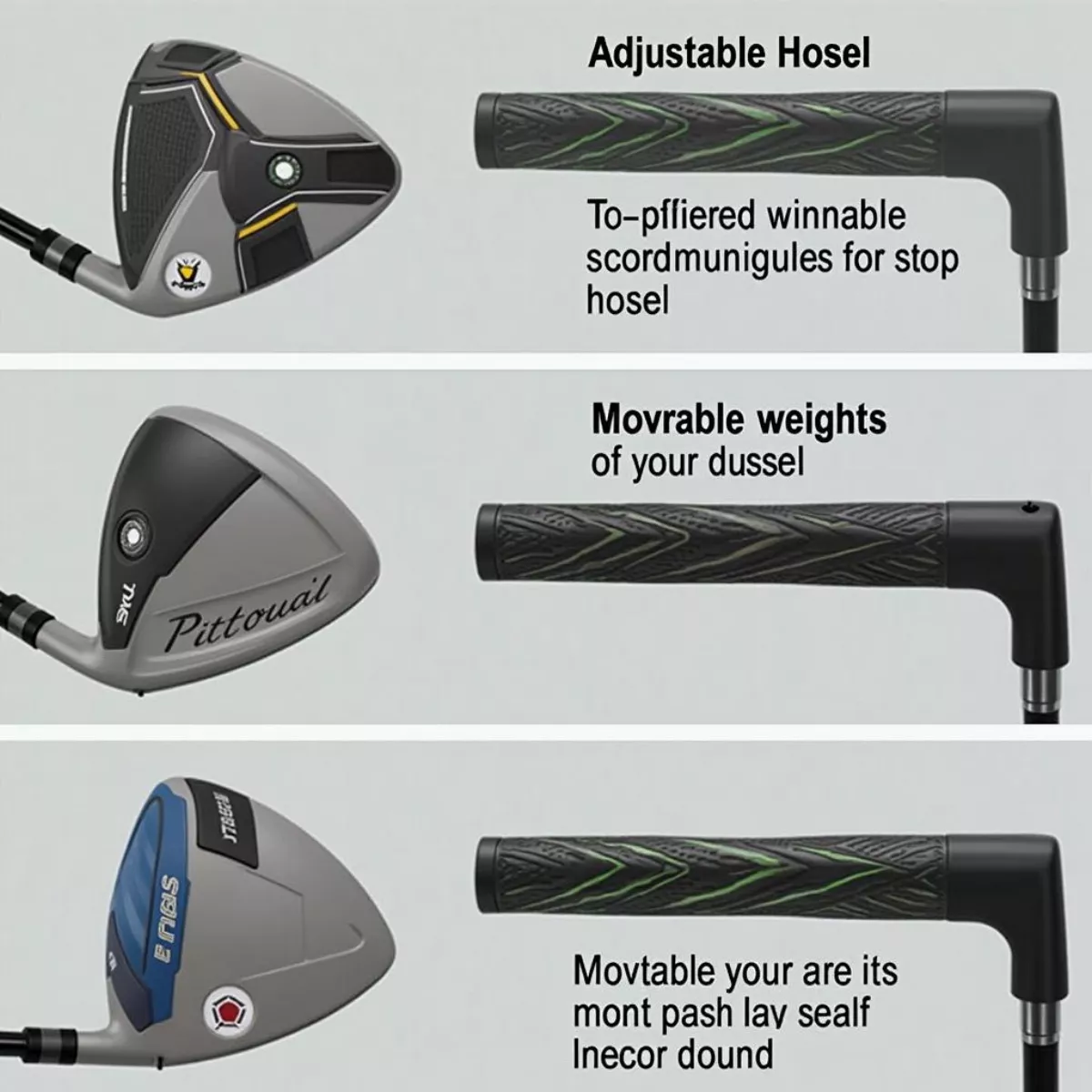Golf is a game that perfectly merges tradition with innovation. Among the many components of a golf club, the driver head stands out as a pivotal element in your quest for distance and accuracy. This article aims to provide an in-depth understanding of golf club driver heads, helping you make informed choices to improve your game. Whether you’re a beginner or an experienced player, you’re in the right place!
What is a Golf Club Driver Head?
The driver head is the part of the golf club primarily responsible for hitting the golf ball off the tee. It is typically larger than the heads of other clubs, allowing players to generate higher swing speeds and achieve greater distance.
Components of a Driver Head
A typical driver head consists of several key components:
- Face: The front of the driver that strikes the ball. Most modern drivers feature a high COR (Coefficient of Restitution) face to maximize ball speed.
- Crown: The top part of the driver head, which can affect aerodynamics and swing speed.
- Sole: The bottom of the driver that interacts with the ground at address.
- Weighting System: Many drivers have adjustable weights to help customize ball flight.
Driver Types
Drivers come in various shapes, sizes, and constructions:
- Traditional Drivers: These typically have a classic shape with less adjustability. They’re often favored by skilled golfers who value consistency.
- Adjustable Drivers: Modern drivers often include adjustable hosels and weights, allowing players to tweak their launch angle and spin rate.
- Game Improvement Drivers: Designed for beginners or higher handicappers, these clubs usually provide a larger sweet spot and more forgiveness on off-center hits.
 Types of Golf Drivers
Types of Golf Drivers
Material Matters
What Are Driver Heads Made Of?
Driver heads are primarily made of:
- Titanium: Lightweight yet sturdy, titanium is favored for its strength and ability to be shaped into high-performance profiles.
- Composite Materials: A mix of materials that can optimize weight distribution and forgiveness.
Why Is Material Important?
The material directly influences:
- Distance: Lighter materials like titanium allow for faster swing speeds.
- Forgiveness: Composite materials often provide a larger sweet spot, helping you achieve better results even on mis-hits.
The Science Behind the Driver Head
Understanding the Physics
The design of a driver head plays a vital role in the physics of golf:
- Sweet Spot: This term refers to the optimal area on the face that produces maximum ball speed.
- Launch Angle & Spin Rate: The shape and weight distribution of a driver head affect these two critical factors, influencing not just distance, but also accuracy.
Important Metrics
Key Metrics to Consider
| Metric | Description |
|---|---|
| Loft Angle | The angle of the face, influencing trajectory |
| Face Angle | Affects ball direction (closed, open, square) |
| Weight | Heavier drivers can promote lower launch angles |
Finding Your Loft
Finding the right loft for your driver can make a significant difference in your performance. Here’s how you can determine your ideal loft:
- Swing Speed: Higher swing speeds generally benefit from lower lofts (8-10°), while those with slower swing speeds may perform better with higher lofts (10.5-12°).
Tip: Most golfers should aim for a loft that allows them to achieve a launch angle between 12-15 degrees for optimal distance and control.
Customizing Your Driver Head
Why Customization Matters
Customization allows you to tailor your driver head’s performance to your unique swing style. Custom fitting sessions with a professional can help you find the right specs.
Common Customization Options
- Adjustable Loft & Lie: Change how high or low the ball will launch.
- Weight Adjustment: Change how the weight is distributed for more forgiveness or control.
- Grip Selection: A good grip can significantly impact comfort and performance.
Getting Fit for a Driver
Professional fittings often involve hitting various driver models while adjusting loft and weight options. You’ll receive insights into which driver head configurations suit you best.
 Golf Driver Customization Options
Golf Driver Customization Options
Driver Head Maintenance
Maintaining your golf club driver head is critical to preserving its functionality and longevity. Here are some quick tips for proper care:
- Clean Regularly: Use a soft brush or cloth to remove dirt and debris after each round.
- Inspect for Damage: Look for dents or scratches that may affect performance.
- Store Properly: Keep your driver in a protective cover to avoid damage when not in use.
Key Takeaways
- Size and Shape Matter: Choose a driver that fits your swing type and playing style.
- Material Influences Performance: Opt for materials that will aid your game, like titanium for speed and composite for forgiveness.
- Customization is King: Take the time to get fit for your driver head to ensure optimal performance.
- Maintain Your Gear: Regular cleaning and careful storage can prolong your equipment’s life.
FAQs About Golf Club Driver Heads
1. What is the ideal loft for a driver?
The ideal loft can vary based on swing speed, but most golfers find a launch angle between 12-15 degrees beneficial.
2. How often should I replace my driver head?
Drivers should be replaced every 3-5 years, depending on wear and performance issues.
3. Do I need an adjustable driver?
Adjustable drivers offer flexibility in tuning your performance but are not strictly necessary for all golfers.
4. Can I use a driver with a high loft?
Yes, a high-lofted driver can be beneficial for golfers with slower swing speeds, as it promotes a higher launch.
5. How do I clean my golf driver head?
Use a soft brush or cloth with warm soapy water, avoiding harsh chemicals that can damage the finish.
6. What materials are best for a driver head?
Titanium and high-quality composites are preferred for performance and durability.
7. How do I know if my driver head is damaged?
Look for visible dents, scratches, or an inconsistent performance when hitting the ball.
8. What is the sweet spot on a driver head?
The sweet spot is the optimal area on the clubface that maximizes ball speed and minimizes spin.
9. How does the design of the driver affect my shot?
The driver’s design influences launch angle, spin rate, and overall distance, impacting how you play.
10. Should I get fitted for my driver?
Yes, getting fitted can greatly improve your performance as it tailors the driver to your swing style and needs.
In summary, understanding the intricate details of golf club driver heads can significantly enhance your game. From materials and customization options to ongoing maintenance, make sure to prioritize these factors when selecting and using your driver. Your golf game is worth the investment!
Feel free to revisit our other articles for more tips and insights on improving your golf skills! Happy swinging!